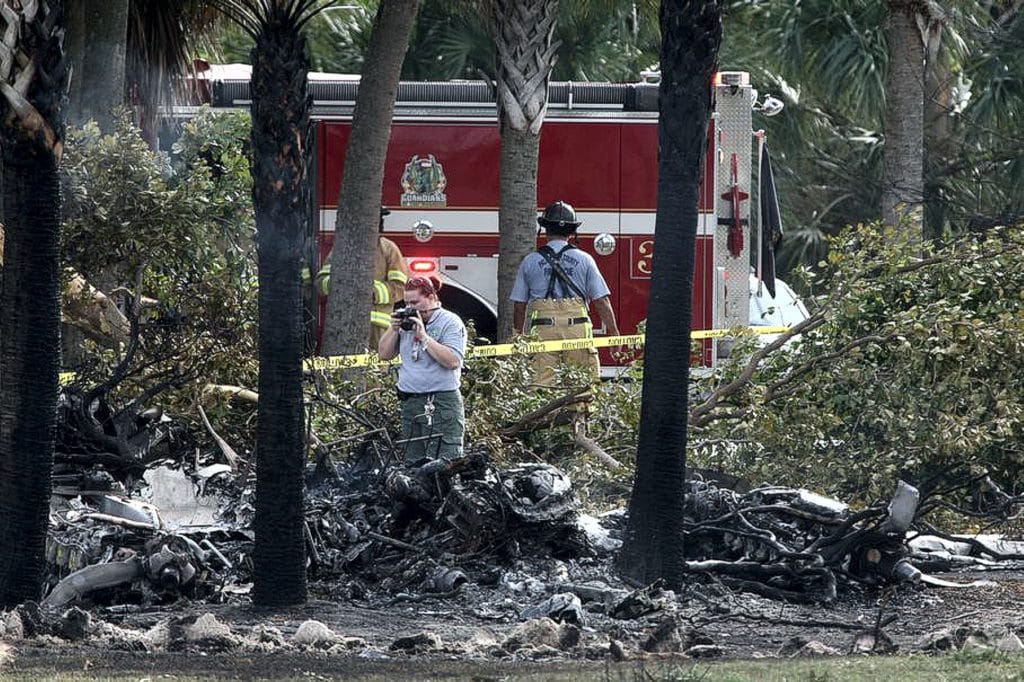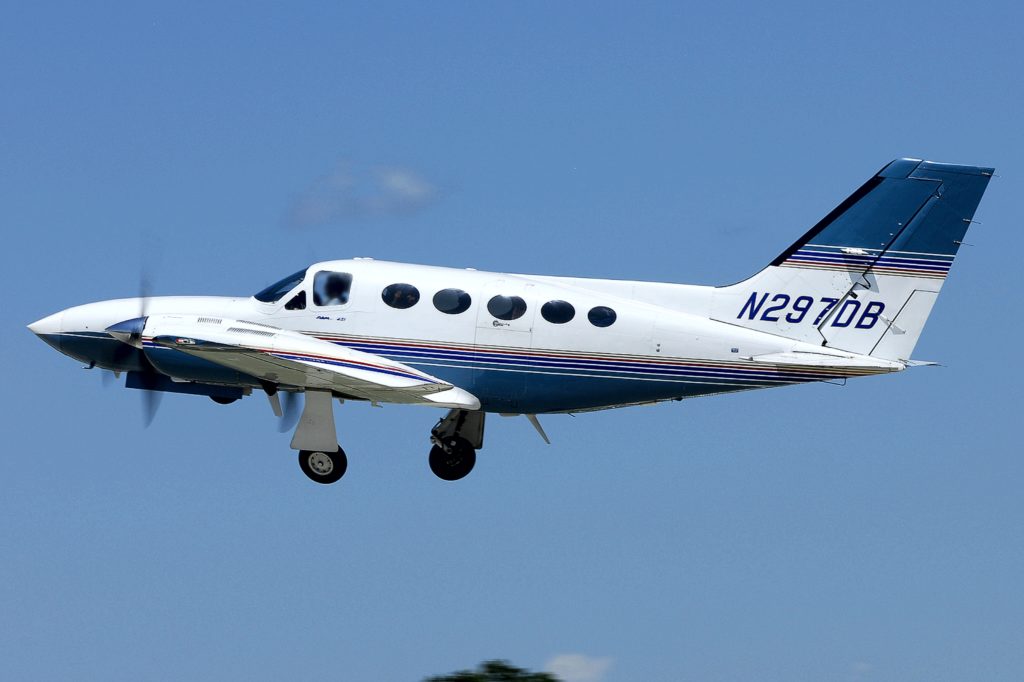When it comes to GA crashes, the NTSB doesn’t always get it right, nor does the jury

In December of 2012, a father and his son arrived at the airport to pick up the father’s Cessna 421C cabin-class piston twin, which had been in the maintenance shop for months receiving a new paint job and an annual inspection. Both father and son were experienced multiengine pilots.
The son had earlier flown the aircraft on an hour-long post-maintenance test flight with a mechanic in the right seat. The test flight revealed that the left engine’s RPM was 100 RPM over red-line and its fuel flow was a couple of gallons per hour low. After landing, the mechanic made adjustments to the left engine’s RPM and fuel flow and corrected a few minor cosmetic issues.
The plan was for the son to fly the aircraft to a nearby airport that was its home base, and for his dad to drive to meet him there. The pilot ran up the engines on the ramp in front of the shop for several minutes before taxiing to the departure runway of the non-towered airport. According to the mechanic who watched the takeoff, the airplane lifted off about halfway down the 3,500-foot runway and initially climbed at a normal rate, then yawed suddenly to the left for a second or two after which the nose continued to pitch up. The airplane rolled left and descended vertically nose-down into the ground just outside the airport boundary, destroying the aircraft which was largely consumed by fire. The pilot was fatally injured.
One witness observed that the right propeller was turning but the left propeller was not. A CFI who witnessed the accident told investigators that “it looked like a Vmc roll.” (A Vmc roll occurs to a twin with only one engine operating when its airspeed is allowed to decrease below the engine-out minimum control speed known as Vmc which is marked on the airspeed indicator by a blue radial line.)
NTSB Investigation
The NTSB investigated the accident. The investigation team included representatives from the NTSB, FAA, Cessna Aircraft and Continental Motors. The left propeller was found to be feathered, and the landing gear actuators were in the down-and-locked position.
Both Continental GTSIO-520 engines were recovered from the wreckage and shipped to Mobile, Alabama where they underwent forensic teardowns by Continental technicians under the supervision of an FAA inspector. The #1 (rearmost) main bearing was found to be “rotated, damaged and distorted severely” with bearing material extruded from the steel backing and with fragments of the bearing found in the oil sump. The #3 main bearing also exhibited accelerated wear and “wiping” of the Babbitt material. Damage signatures consistent with excessive heat due to oil starvation were found in the #1 and #3 main bearings, the #1 and #2 connecting rod bearings, and the corresponding crankshaft journals. The camshaft gear was damaged, with five gear teeth sheared off. Several pistons exhibited valve strike signatures.
Examination of maintenance records revealed that the left engine had been overhauled by RAM Aircraft about three years and 300 hours prior to the accident, and there had been no subsequent cylinder removals or other maintenance that would have required retorquing of any engine through bolts. Near the end of the detailed work order for the annual inspection, there was an entry that read:
“Investigate no oil pressure on left engine; re-prime left oil pump, filter, standpipe.”
When questioned by investigators, the owners of the maintenance facility said that the airplane’s engines sat idle for weeks due to the annual inspection and paint job. They explained that the oil has a tendency to “settle” in the sump and cause the oil pump to lose its prime. They stated that after the inspection, the engines were “motored” with the starter and that the left engine showed no oil pressure. The oil system was then primed, and oil pressure was restored to the engine prior to start.

About a year later, the NTSB issued its Final Report on this accident. Its determination of probable cause was:
“The pilot’s failure to follow established engine-out procedures and to maintain a proper airspeed after the total loss of engine power on one of the airplane’s two engines during the initial climb. Contributing to the accident was the total loss of engine power due to a loss of torque on the crankcase bolts for reasons that could not be determined because of impact- and fire-related damage to the engine.”
Litigation
The aircraft owner and father of the deceased pilot filed a civil lawsuit. Defendants included the shop that annualed the aircraft, as well as the firm that overhauled the engines and the manufacturers of the aircraft, engines and propellers (RAM, Cessna, Continental, and Hartzell).
The shop’s insurance carrier very quickly settled with the plaintiff for the maximum limit of the shop’s liability insurance policy—about $1 million if I recall correctly. This left only the “deep-pocket defendants” (RAM, Cessna, Continental and Hartzell) in the case. Years of costly discovery ensued. This included numerous depositions of fact witnesses and an all-star cast of superbly well-qualified (and costly) expert witnesses. The discovery process also included a second and much more detailed forensic teardown inspection of the left engine performed at the McSwain Engineering laboratory facility in Pensacola, Florida. Throughout all this, there were countless attorneys billing the various parties at eye-popping hourly rates. Air crash litigation can be a breathtakingly expensive proposition.
As it happens, I was retained as an expert witness by one of the defendants (RAM), so I got to participate in the teardown at McSwain lab (where I took lots of photos) and to review all the deposition transcripts, maintenance records and other documents relevant to the case. The discovery process uncovered a number of important facts that the NTSB investigation missed. I wrote up my findings and conclusions for the court in a detailed “Rule 26 Report.”
What Really Happened
After reviewing the shop’s extremely detailed work order and reviewing the deposition transcript of the mechanics involved, I concluded that the shop’s lead A&P/IA ran up the left engine three times with no oil pressure. After the third runup, the mechanic reported the lack of oil pressure to the shop owner (also an A&P/IA), who proceeded to call Continental technical support for guidance.
The Continental tech rep provided a recommended procedure for re-priming the oil pump. This involved removing the top spark plugs, pressurizing the crankcase with shop air, then motoring the engine with the starter motor until an oil pressure indication is observed. The shop followed this procedure and was successful in re-priming the pump and re-establishing oil pressure.
At this point, I would think that the shop ought to have been concerned that the three no-oil-pressure runups might have damaged the engine, and ought to have taken appropriate follow-up action. Had I been the mechanic involved, I certainly would have drained and strained the oil, cut open and inspected the oil filter, inspected the prop governor gasket screen, and borescoped the cylinders. Inexplicably, the shop did none of those things.
It was quite apparent to me during the McSwain labs teardown that the rearmost main bearing (#1) was completely destroyed by oil starvation. Virtually all the soft bearing material was gone. This resulted in the unsupported rear end of the crankshaft “orbiting” when the engine was operated at high power. The crankshaft gear is bolted to the aft end of the crankshaft and meshes with the larger but thinner camshaft gear bolted to the rear of the camshaft. The orbiting crankshaft gear severely damaged the camshaft gear, causing total loss of three adjacent gear teeth and partial loss of two additional teeth.
This caused the camshaft to stop rotating, resulting in a total loss of engine power and valve strikes when the reciprocating pistons struck valves that were now stuck in the open position. It also caused the prop governor to stop turning—it’s driven by a bevel gear on the front end of the camshaft—and that caused the left propeller to feather automatically.
At this point, all the pilot would have needed to do was to lower the nose to maintain best single-engine climb speed (Vyse) and press on the right rudder pedal to counteract the yaw. Had he done this, the aircraft would have easily held altitude. Had the pilot then had the presence of mind to retract the still-extended landing gear, the airplane would have climbed at 500 feet per minute or more.
Unfortunately, the pilot did none of these things. He allowed the airspeed to deteriorate below minimum single-engine control speed (Vmc) at which point the airplane became uncontrollable, rolled inverted due to the asymmetric thrust, and became a smoking hole. This all happened very quickly and at an altitude so low (about 500 feet AGL) that there was no possibility of recovery.
The Jury Verdict
After two years of discovery, this case headed for a jury trial. The plaintiff entered voluntary dismissals of its complaints against RAM, Cessna and Hartzell, leaving Continental Motors as the sole remaining defendant. The dismissals ended my involvement in the case, so I never got to testify at trial nor hear the testimony of other fact and expert witnesses. Too bad, it would have been interesting.
The plaintiff attorneys argued that the engine failure was caused by failure of a component called a “viscous torsional vibration damper” that is unique to the Continental GTSIO-520 engine. Indeed, there is a history of GTSIO-520 engine failures caused by failure of the viscous damper, and there is a repetitive Airworthiness Directive that requires frequent inspections of this admittedly troublesome component.
The viscous dampers of both engines were sliced open and meticulously inspected during the McSwain lab teardown. Ironically, the left viscous damper was found to be in perfect condition, while the right viscous damper—the one on the engine that didn’t fail—was in pretty bad shape. I was there and saw this with my own eyes.
Nevertheless, the plaintiff attorneys and their expert witnesses somehow managed to persuade the jury that a faulty viscous damper was the cause of the engine failure that precipitated the crash, and that the pilot was not at fault. On March 13, 2019, the jury found Continental Motors to be 100% responsible for the crash and awarded $5 million to the pilot’s wife and father. I’d love to have been a fly on the wall in that courtroom, especially in the jury deliberation room.
In case you were wondering, the shop and mechanics that worked on the accident aircraft are still very much in business.
You bought a plane to fly it, not stress over maintenance.
At Savvy Aviation, we believe you shouldn’t have to navigate the complexities of aircraft maintenance alone. And you definitely shouldn’t be surprised when your shop’s invoice arrives.
Savvy Aviation isn’t a maintenance shop – we empower you with the knowledge and expert consultation you need to be in control of your own maintenance events – so your shop takes directives (not gives them). Whatever your maintenance needs, Savvy has a perfect plan for you: